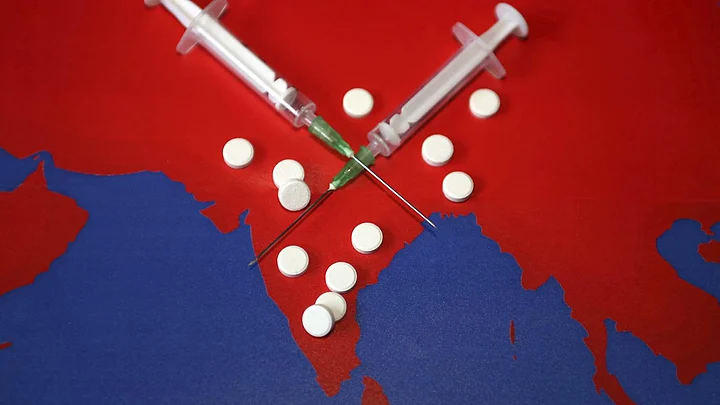- Crippling shortage of life-saving AIDS drugs in Maharashtra.
- One-third of HIV and AIDS patients who depend on the free ART drugs will get severely hit.
- A broke Maharashtra State Aids Control Society decides to trim their workforce by a fourth.
- Drug shortage pinned to bureaucratic hurdles and slashing of health budgets throughout the country.
It’s a disturbing situation for HIV-AIDS patients in Maharashtra.
A penniless, Maharashtra State Aids Control Society (MSACS), which distributes free drugs to HIV patients, has medicines and condoms supply left for only two weeks!
With no funds, the MSACS has issued a circular to NGOs to cut down on 25% of their work force which distributes syringes, medicines and kits to AIDS patients till March 2016.
This will have drastic consequences in the fight against the disease, especially since Maharashtra has an HIV prevalence of 0.40%, that’s higher than the national average of 0.35%.
Grim Scene For HIV Patients in Maharashtra
As many as 3 lakh HIV and AIDS patients might be left without treatment as the free medicine distribution programme is set to run out of medicines in the next fortnight. The supply of testing kits and anti-retroviral drugs (medicines to treat AIDS), has been erratic since December 2013. Last year, there was not a single ART (anti-retroviral) centre in the state which did not report drug shortage for several weeks.
Some NGOs associated with the Maharashtra State Aids Control Society have not received any funds to carry out prevention activities or even pay salaries to staff since April 2015.
India is home to the world’s third highest population of people with HIV, which stood at nearly 2.4 million in 2011. Currently NACO (National AIDS Control Organisation) is responsible for supplying drugs, testing kits and condoms to the state AIDS control agencies. MSACS ensures the treatment and prevention to reduce HIV transmission is properly carried out.
As the HIV drugs are very expensive, more than a third of HIV and AIDS patients seek free anti-retroviral drugs from government centres.
Doctors are sounding the alarm bells.
Any break in the course of treatment leads to the virus developing drug resistance. There are only a fixed number of medicine combinations to treat this disease. If a patient develops resistance because of non-availability of drugs, they will be forced to shift to a stronger, more expensive dosage in the future.
Imagine a pregnant woman with AIDS. A disruption in her treatment will mean the child getting infected with HIV in the womb.
The situation is so serious this year that Maharashtra State Aids Control Society has asked patients to replace Nevirapine, a key drug in the ART cocktail (of which there is a shortage) with another medicine, Efavirenz.
Medically, that’s very wrong because patients develop resistance to one medicine and the substitute is not that effective on everyone. The side-effects are also severe.
– Dr N Mohanty, India Programme Head, AIDS Health Foundation
Red Tape in Life-Saving Drugs?
The essential HIV drugs supply crunch should be an embarrassment for the Modi government, who had promised to deliver more affordable and better health services.
The current crisis has been in the making since two years now. It has got out of hand in Maharashtra, but ART drug shortage in government centres is a nation-wide problem.
Red tape on international grants, slashing of health budgets, bottle neck in supply and poor co-ordination between Centre and States has endangered patients lives.
It all started in 2013, when the Union Health Ministry sat on grants by the Global Fund to Fight AIDS, Tuberculosis and Malaria (GFATM) for 18 months.
Activists allege that despite having adequate funds, the government’s delay in placing tenders to procure drugs started the collapse of India’s most critical national health programme.
NACO is now leaning on pharma companies like Aurobindo Pharma, (one of the manufacturers that has been awarded the contract) to help avert a crisis.
The Last Leg
The drug shortage has stopped NACO from adopting the more ambitious World Health Guidelines for treatment. NACO usually starts treatment for patients whose CD4 cell count falls to 350. However, it planned on adopting the WHO recommendations of starting treatment when the CD4 cell count is 500. That would mean making nearly twice the number of ART drugs available since many patients will be eligible in the early stages of infection. Since the drug shortage is becoming worse, NACO has shelved its plan of early treatment.
In the last two decades, India has made impressive progress in tackling AIDS. It is one of the best public health initiatives after polio, and on track to meet the Millennium Development Goal of halting the HIV-AIDS epidemic.
Only last year, the HIV-AIDS figures for India have seen a slight decline. What does a fund shortage of this magnitude mean? Is the disease not crippling anymore?
So will HIV-AIDS go the Tuberculosis way? The public health fight against TB was abandoned in the last leg in the ‘90s, until it struck back in an incurable, drug-resistant form in the last decade.
(At The Quint, we question everything. Play an active role in shaping our journalism by becoming a member today.)
